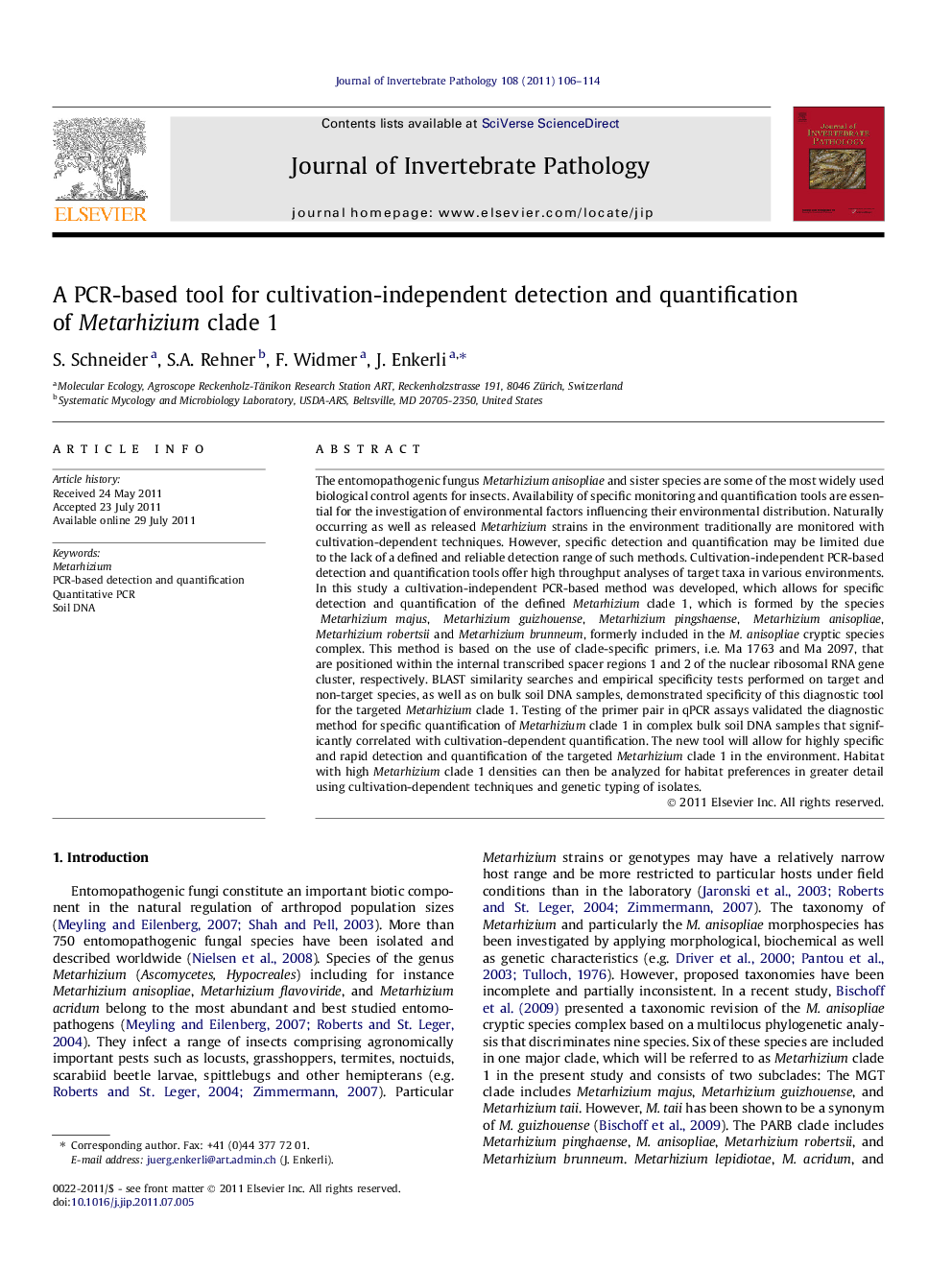| Article ID | Journal | Published Year | Pages | File Type |
|---|---|---|---|---|
| 4557961 | Journal of Invertebrate Pathology | 2011 | 9 Pages |
The entomopathogenic fungus Metarhizium anisopliae and sister species are some of the most widely used biological control agents for insects. Availability of specific monitoring and quantification tools are essential for the investigation of environmental factors influencing their environmental distribution. Naturally occurring as well as released Metarhizium strains in the environment traditionally are monitored with cultivation-dependent techniques. However, specific detection and quantification may be limited due to the lack of a defined and reliable detection range of such methods. Cultivation-independent PCR-based detection and quantification tools offer high throughput analyses of target taxa in various environments. In this study a cultivation-independent PCR-based method was developed, which allows for specific detection and quantification of the defined Metarhizium clade 1, which is formed by the species Metarhizium majus, Metarhizium guizhouense, Metarhizium pingshaense, Metarhizium anisopliae, Metarhizium robertsii and Metarhiziumbrunneum, formerly included in the M. anisopliae cryptic species complex. This method is based on the use of clade-specific primers, i.e. Ma 1763 and Ma 2097, that are positioned within the internal transcribed spacer regions 1 and 2 of the nuclear ribosomal RNA gene cluster, respectively. BLAST similarity searches and empirical specificity tests performed on target and non-target species, as well as on bulk soil DNA samples, demonstrated specificity of this diagnostic tool for the targeted Metarhizium clade 1. Testing of the primer pair in qPCR assays validated the diagnostic method for specific quantification of Metarhizium clade 1 in complex bulk soil DNA samples that significantly correlated with cultivation-dependent quantification. The new tool will allow for highly specific and rapid detection and quantification of the targeted Metarhizium clade 1 in the environment. Habitat with high Metarhizium clade 1 densities can then be analyzed for habitat preferences in greater detail using cultivation-dependent techniques and genetic typing of isolates.
Graphical abstractFigure optionsDownload full-size imageDownload as PowerPoint slideHighlights► Metarhizium spp. ITS phylogeny is consistent with multilocus phylogeny by Bischoff et al. (2009). ► The new qPCR tool specifically detects Metarhizium clade 1 including the MGT and PARB clusters defined by Bischoff et al. (2009). ► The tool allows for cultivation-independent quantification of Metarhizium clade 1 in soil.
